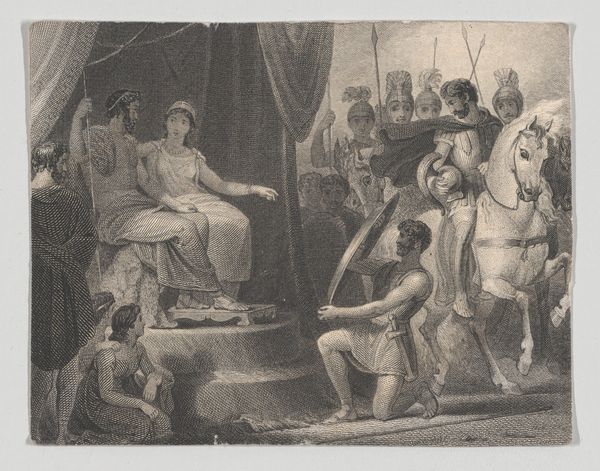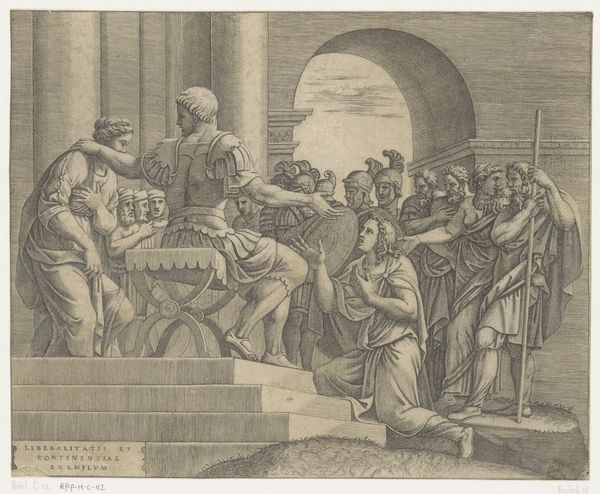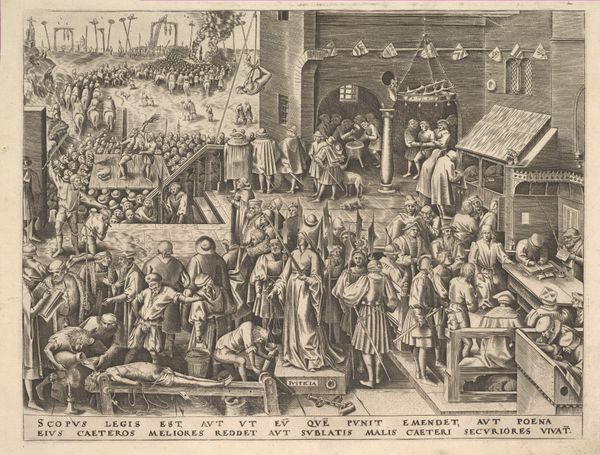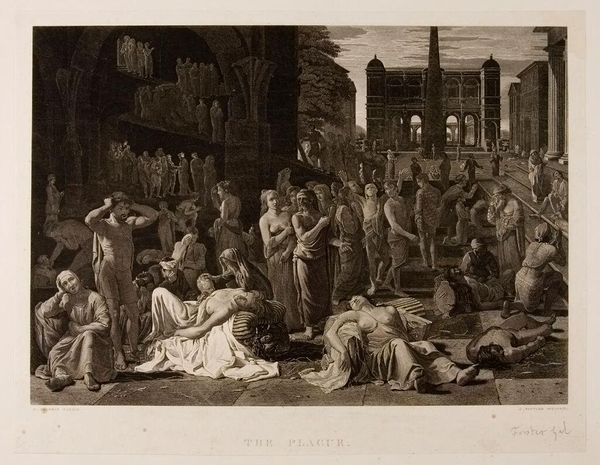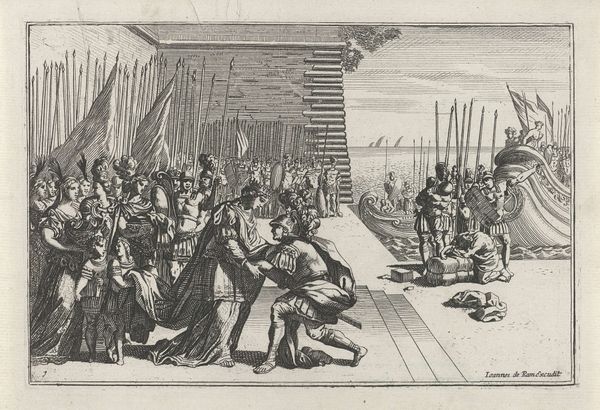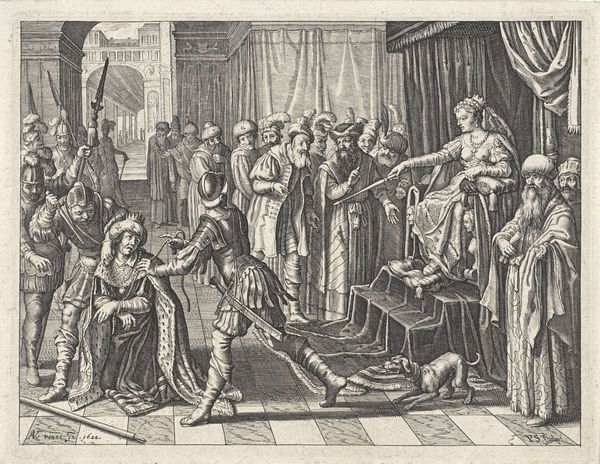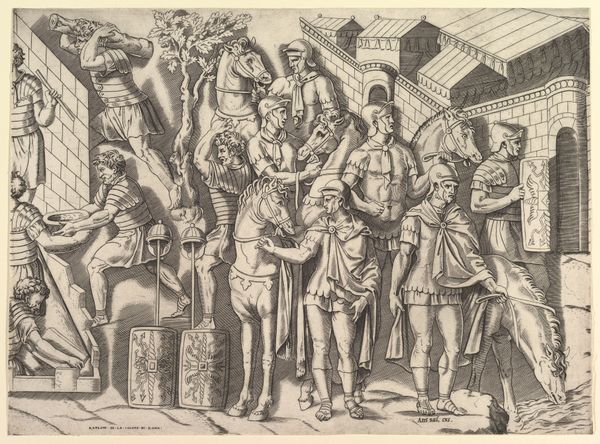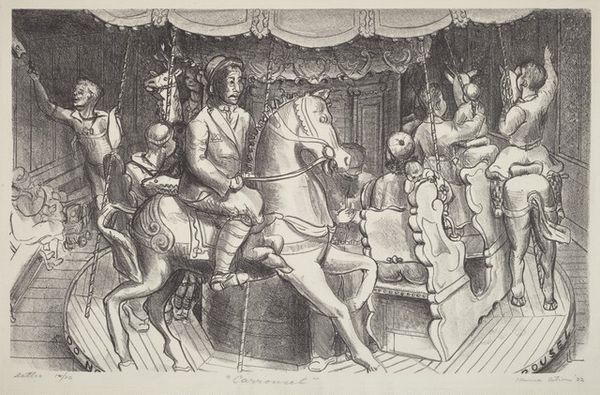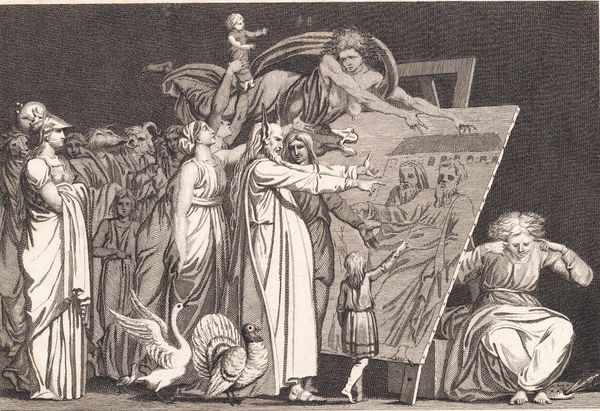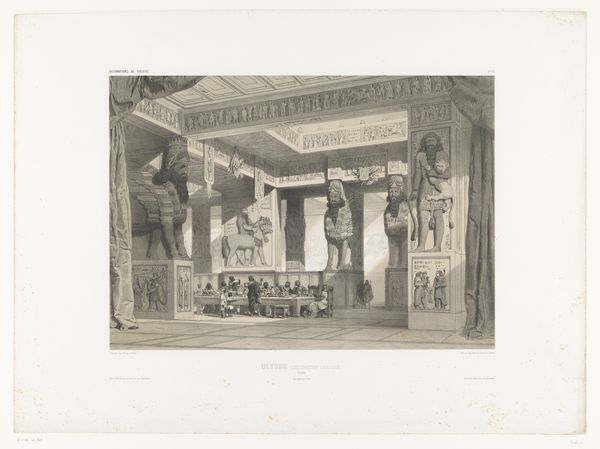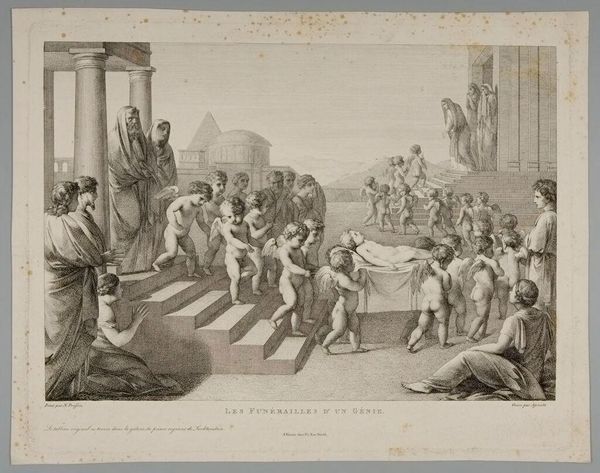
drawing, print, ink, woodcut
#
drawing
#
medieval
#
narrative-art
# print
#
figuration
#
ink
#
woodcut
#
line
#
genre-painting
Dimensions: 96 mm (height) x 167 mm (width) (billedmål)
Curator: As you can see, we have before us a work titled "The Story of Akamalik: Akamalik is Baptized," crafted between 1858 and 1860 by Aron from Kangeq. It’s an ink and woodcut print. Editor: The overwhelming feeling I get is of solemnity, but also rigidity. Look at those lines! Everything, from the wooden planks of the walls to the figures themselves, seems constrained by a sharp linearity. Curator: The starkness of the composition certainly emphasizes structure. Notice the verticality, created by the lines that divide the architectural space and frame the figures in rigid attention. It reinforces a sense of order, and perhaps even of imposed authority within the scene. Editor: I am very drawn to what is visible of its process and its materiality. Look at the density of ink and the clearly visible carved lines. The texture of the wood grain fighting its way into the image... What kind of labor was needed to execute a woodcut with so many meticulously rendered people? Curator: Indeed, the craftsmanship is undeniable. But it’s the semiotic impact that grabs my attention—the way the composition signifies themes of religious conversion and cultural transformation. The ritual of baptism takes center stage. The figures stand neatly divided. Note the formal repetition of their silhouettes: they represent an assimilated community adopting a new spiritual and cultural identity. Editor: But at what cost? The rigid uniformity of the audience strikes me. Is this supposed to represent a willing congregation? We must think about who was demanding that it be made, and in what historical circumstances, before declaring that assimilation is actually what’s taking place here. What did Aron from Kangeq think, and what was his relationship with this process of religious and cultural upheaval? Curator: Those are crucial questions, without a doubt. Examining the context of production allows for a more complete interpretation, complicating any simplistic reading of cultural imperialism. Editor: Exactly! The materials speak volumes about agency, about control and the distribution of labor... That is where we see a broader human story emerging from these carved lines. Curator: Understanding how Aron used formal structure to represent such an event deepens the discussion around the work's place in nineteenth-century visual culture. Thank you, I learned something too! Editor: Likewise; your attention to structure allowed me to consider how those lines bear the traces of something very material. Thank you!
Comments
No comments
Be the first to comment and join the conversation on the ultimate creative platform.

